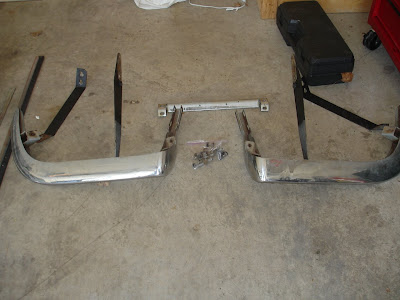




The number of different connections surprised me. Ground straps, speedometer cables, Seat belt cables, etc. After many hours the time came to attach the straps to the chain hoist. However, there was a few small items to address before hanging a 1966 Corvette body from the ceiling.
The ceiling of my garage is constructed of sistered 2x12s spanning 24 feet. I wanted to know whether that was capable of supporting roughly 900lbs. After a little internet research the engineering is as follows:- Taking a typical 2x12, the allowable bending stress, Fb, is around 500 psi. The actual dimension of a 2x12 is 1.5"x11.25" thus resulting in an section modulus, S, of 1/6*b*h^2 = 31.64 in ^3. Therefore the allowable bending capacity, M, is equal to Fb*S = 15820 lb-in. If a load, P, is applied directly at the center of the board, then the allowable load is P = 4M / L, where L is the length in inches (288 inches). Therefore, the allowable load is 4*15280/288 = 220 pounds. This represents the "safe load" that can be applied. Theoretically, the board will fail in bending around 3 times that amount, or around 660 lb. The allowable value of 220 lb is what you use when determining how much load to place. I created a frame that distributes the load across 2 sets of sistered 2x12s. Therefore the safe load should be somewhere around 880lbs.
Given the failure level is 3x that number and that I have stipped out roughly 100lbs from the body (seats, carpet, etc) I felt pretty comfortable that I wouldn't pull down the entire garage. I included a picture of the frame that I hung the chain hoist from below.





 6124449 F0520HE
6124449 F0520HE

